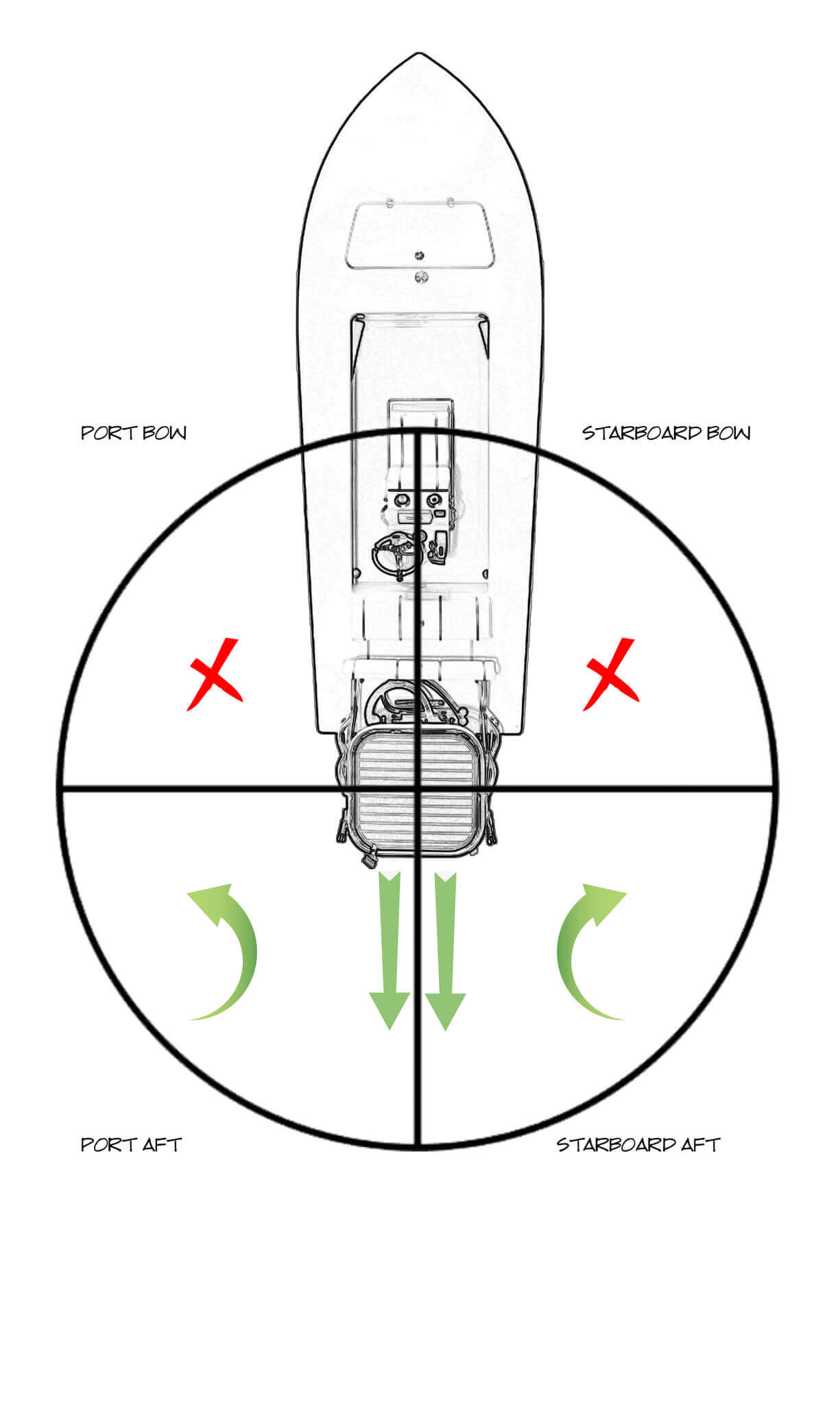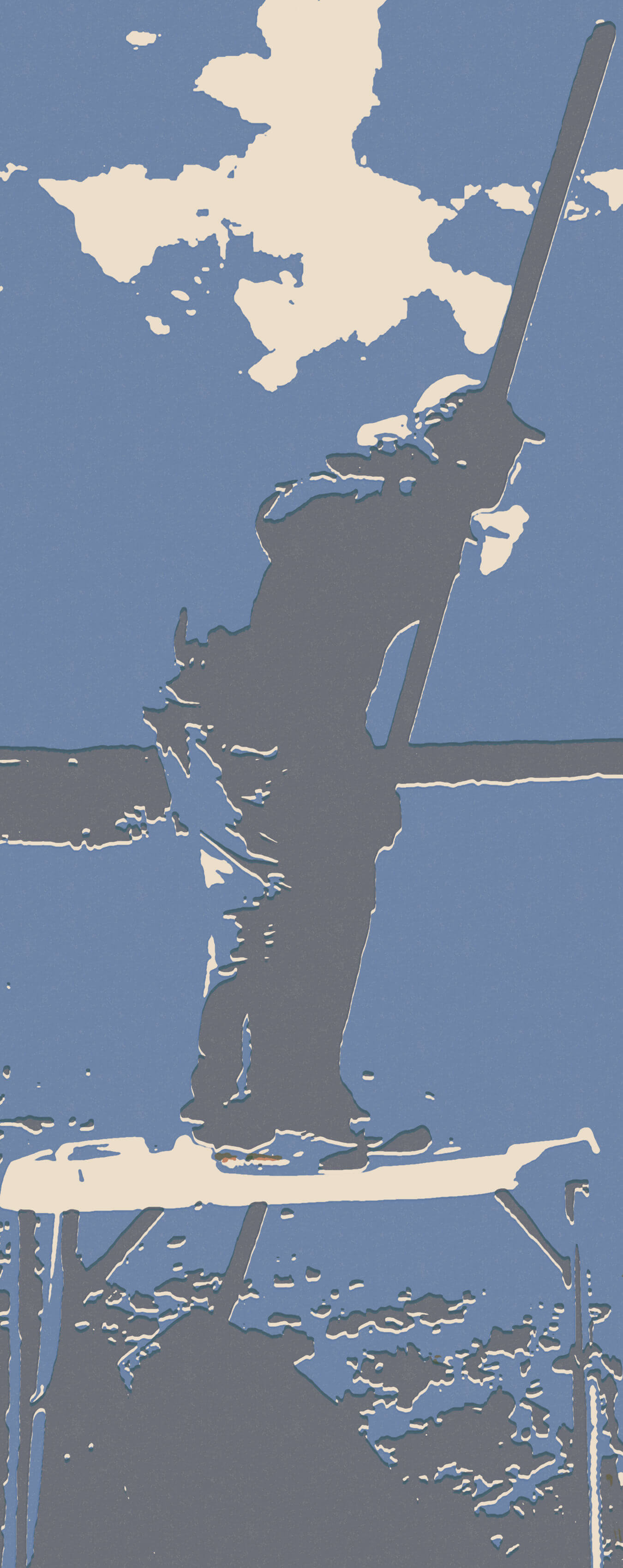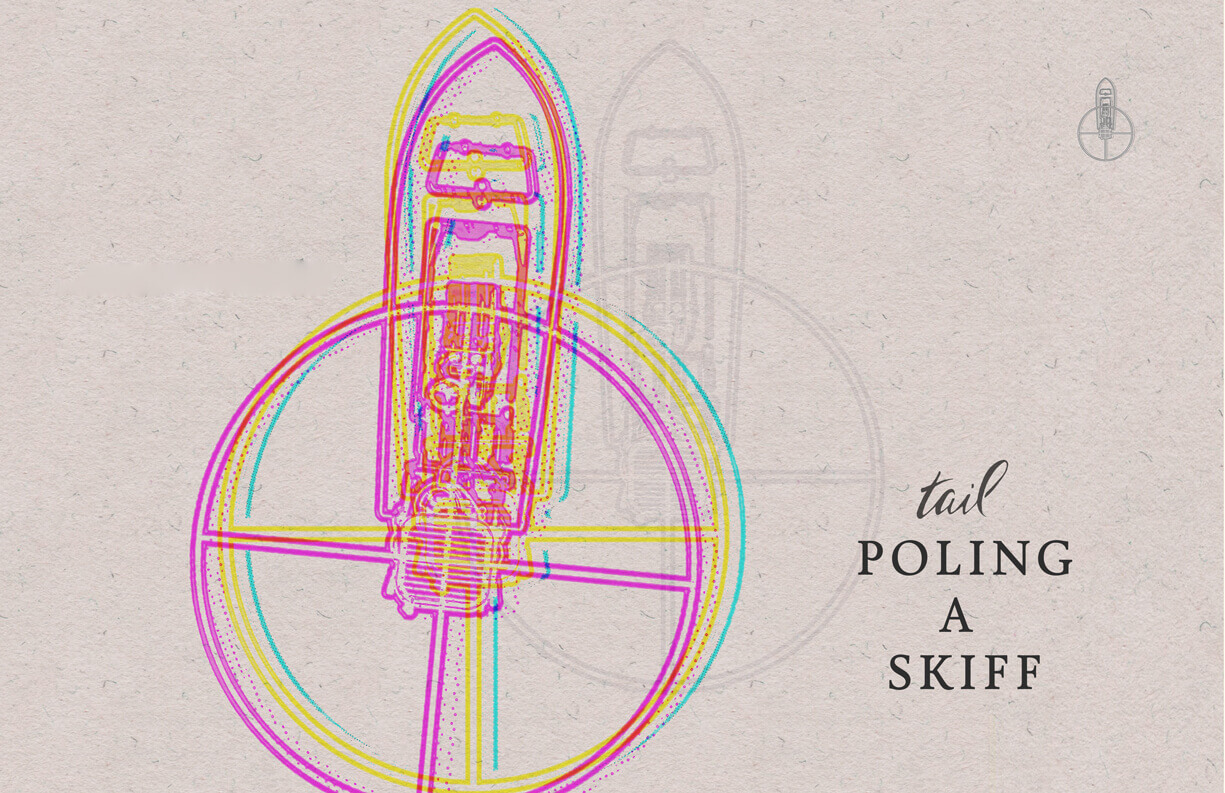Getting Pushed Around: How to Pole a Skiff
Originally published in Tail #39 – March 2019
Viewing from the perspective of the cooler seat, one cannot fully appreciate the interplay of physics and finesse required to gracefully move a 500-pound boat though 8 inches of water. Poling a boat is an acquired skill that is based in physics, but it requires time and practice to become proficient, even after one grasps the fundamental concepts.
Poling as we know it today was developed in South Florida. Back in the 1960s, Flip Pallot and Chico Fernandez balanced on top of an outboard cowling while using a fiberglass vaulting pole—a feat that by today’s standards is the equivalent of doing surgery with yard tools. After a while, Chico and the late Bill Curtis persuaded Bob Hewes to include a poling platform on what is now considered the first modern flats skiff. Flats fishing had just taken its first major leap forward. Much has changed in the years since. Modern skiffs are now made of Kevlar and other materials, the same as those used in the construction of the space shuttles. Poles are also lightweight and quite strong. Technology has come far since the 1960s, but the one thing that hasn’t changed is how we use them.
Steering the boat with a pole can be tricky to say the least. One’s first visit to the platform usually has the boat going in circles, or swinging wildly left and then way to the right due to overcorrection. Steering a skiff correctly is subtle, and true command comes with time, practice, and patience. For those of you reading this who have never poled, here are the four cardinal
movements, accompanied by approximately 10,048 tiny variations:
1. To go straight, pole directly from the back of the boat.
2. To go left, pole to the left of the boat.
3. To go right, pole to the right of the boat.
4. To stop, pole forward either right or left, but keep in mind that the boat will turn in the direction of the pole.
 In physics, mechanics is the study of the motion of objects and the forces that cause the motion to change. Poling a skiff is a variation of Newtonian mechanics that incorporates a lever arm, effort, a pivot, and a load. Using these principles, poling is a modified version of a seesaw or a wheelbarrow—but it’s not that simple. To move the boat easily and effectively, you must understand where to place, and how to apply, force. The rest usually takes care of itself.
In physics, mechanics is the study of the motion of objects and the forces that cause the motion to change. Poling a skiff is a variation of Newtonian mechanics that incorporates a lever arm, effort, a pivot, and a load. Using these principles, poling is a modified version of a seesaw or a wheelbarrow—but it’s not that simple. To move the boat easily and effectively, you must understand where to place, and how to apply, force. The rest usually takes care of itself.
Pushing 90 degrees from the left will move the platform to the right, but the bow of the skiff will turn to the left. Use the illustration to help you visualize how the boat moves. There are four quadrants that extend out about half the length of the push pole, with the poling platform being at the center. It’s paramount to understand how poling in each one of these quadrants affects the movement and positioning of the skiff. The quadrants are labeled as follows: port bow, starboard bow, port aft, and starboard aft. Where the pole makes contact with the bottom dictates the direction of the force, which in turn dictates the direction that the boat will move around the pivot point. To move the boat straight forward you need to place the pole directly behind the platform and push straight back. The boat will move forward in a straight line, but depending on whether the pole is on the left or the right of the motor, the boat will turn slightly in that same direction.
Assume there is no wind or current, so the boat is starting off stationary (not drifting). Push or apply pressure on the side of the boat that is the direction in which you wish to turn the bow. For example, while motionless we decide that we would like to move forward while turning to the left. You would place the pole in the port aft quadrant and push, causing the boat to move forward and the bow to start turning to the left. How dramatic the turn will be is determined by how far from the centerline of the skiff the pole is placed. Want to go forward and swing the bow to the right? Simply put the pole in the starboard aft quadrant and push. A push left will turn you left while a push right will turn you right.
Now let’s assume you are quickly moving forward and downwind. Suddenly, there are fish at 12 o’clock, and the boat needs to turn to give your right-handed caster a shot. It is not only important to turn the boat, but also important to slow or even stop the boat so that you don't approach the fish too quickly. This is when you should move the foot of the push pole forward into the starboard bow quadrant, making contact with the bottom.
 Apply pressure and hold rather than pushing off. This will stop the boat and swing the bow to the right. For correctness sake the stern of the boat will actually slide left but in either description, the fish are now at the 9 o’clock position and teed up for the angler on the casting platform.
Apply pressure and hold rather than pushing off. This will stop the boat and swing the bow to the right. For correctness sake the stern of the boat will actually slide left but in either description, the fish are now at the 9 o’clock position and teed up for the angler on the casting platform.
A principle to keep in mind is that the closer to the the poling platform the pressure or push is applied, the less effect it will have. One exception would be if you were trying to make the skiff move forward in a strong headwind or current. In this situation, you must make a long push forward, and it’s best to start close to the platform. If the pole is too close to the transom it will be close to vertical. The closer to vertical the pole is, the more energy is wasted by pushing downward unless the boat is already moving. As a
rule, try to keep the pole at as low an angle as possible. By keeping the pole low you will use less energy and are also less likely to be spotted by fish.
A common question, and one that I had when I first began, is, Which side should you keep the pole on? Some say whichever side is more comfortable, but actually the pole should always be on the downwind or down-current side of the boat—whichever has the
greatest influence on the movement. This is not intuitive, and took me several months to figure out.
To illustrate this point, if you are poling along in a crosswind, with the wind coming at you from the left, the pole should be on the right of your body. If you hold the pole there and push from directly astern (directly behind the platform in the starboard aft quadrant), the bow will turn slightly to the left, giving you better control, and it will compensate slightly for the wind. This also applies when poling diagonally into wind or poling downwind. Experienced guides make it look easy. They use their hips or torso to adjust the force on the pole. Sometimes simply moving the pole away from the body allows the desired modification in direction. Again, there are four basic movements with an infinite number of variations. Becoming a proficient navigator with a stick takes practice, just as learning to cast takes practice. Learning to pole was a challenge, but it was essential for me as I couldn’t fish with a guide every day. But more important, knowing how to pole allows me to fish on my boat with my guide friends and push them around for a change.
“Your other 10 o’clock, please!”
Good times.


 SUBSCRIBE TO TAIL
SUBSCRIBE TO TAIL